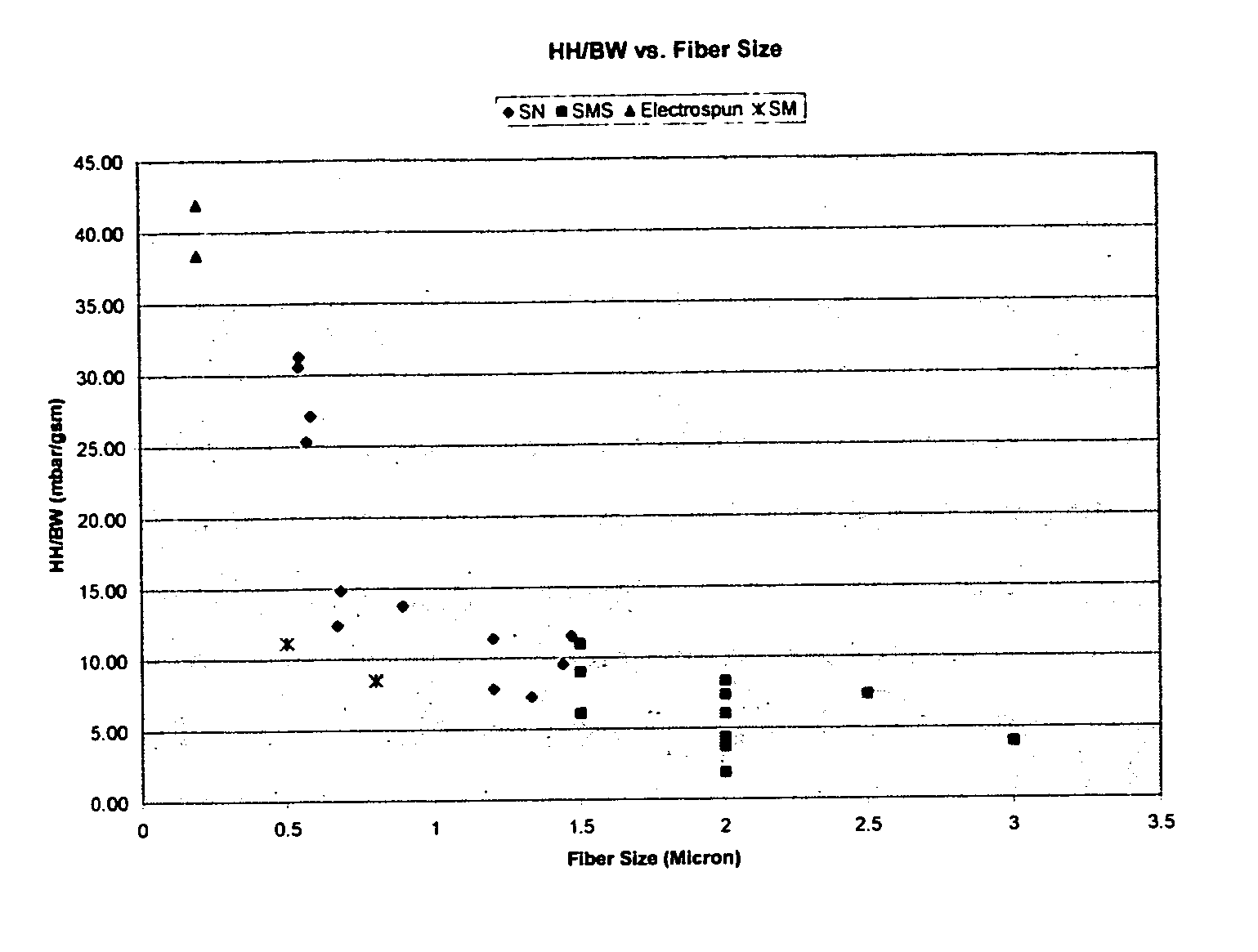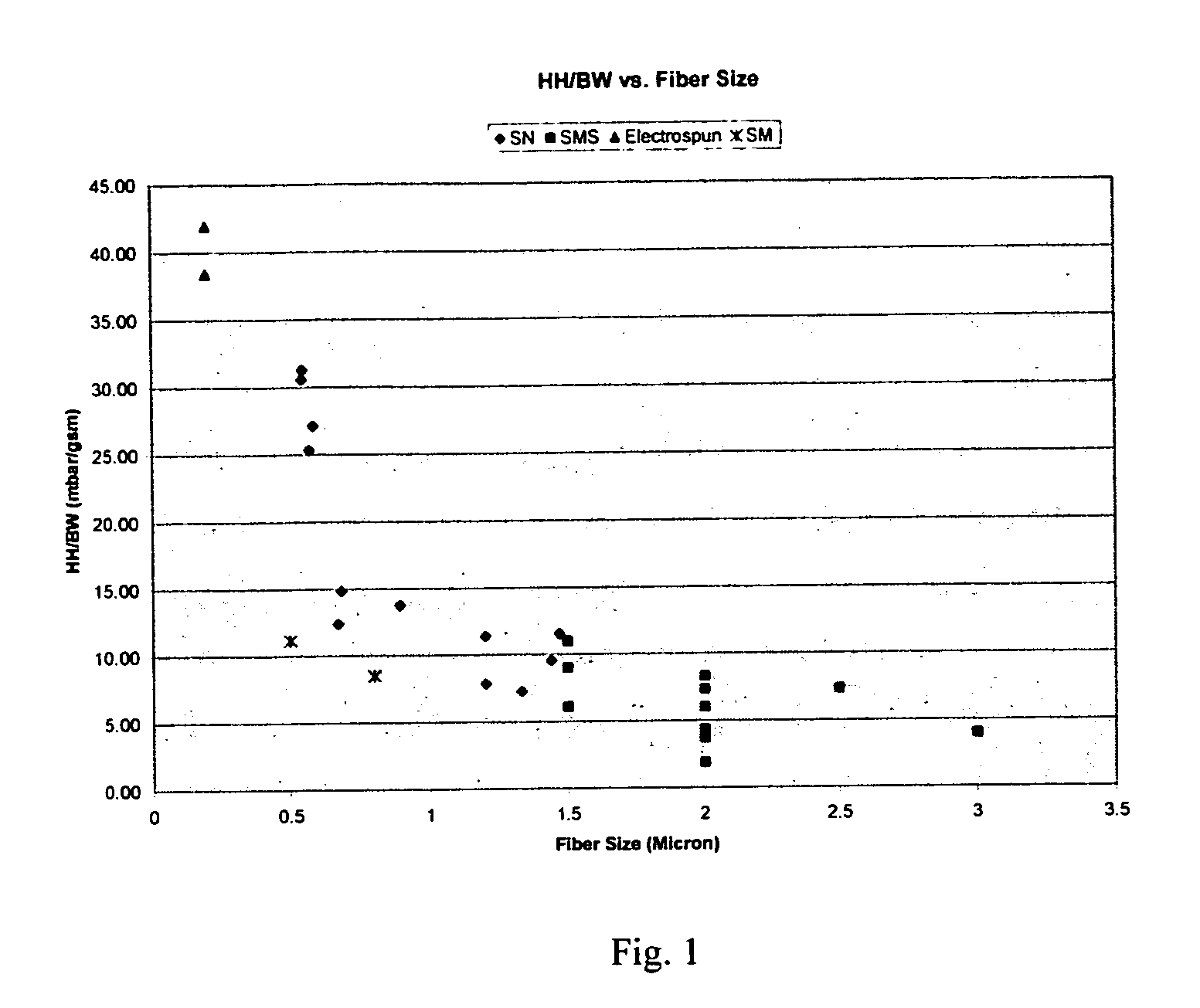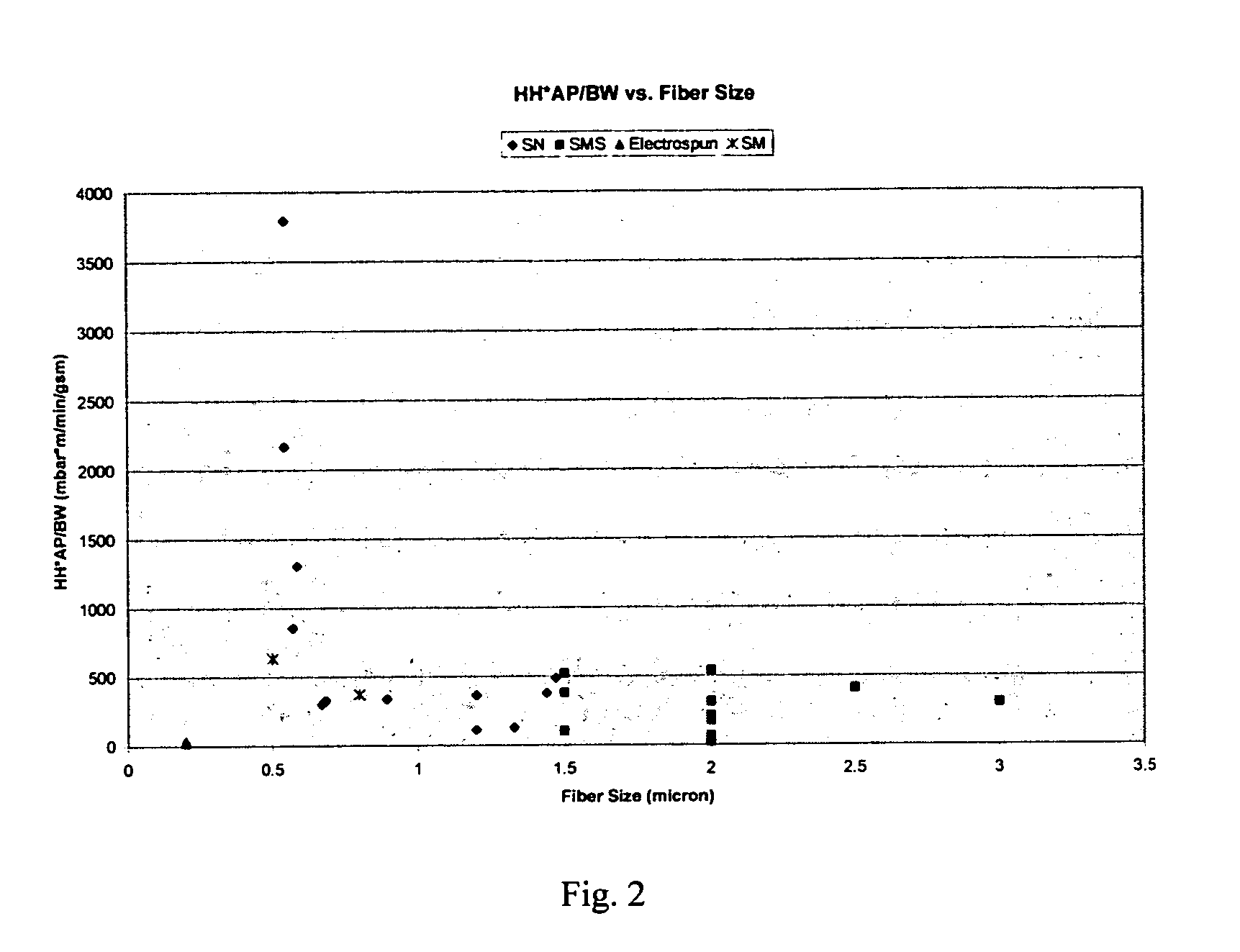Articles containing nanofibers for use as barriers
- Summary
- Abstract
- Description
- Claims
- Application Information
AI Technical Summary
Benefits of technology
Problems solved by technology
Method used
Image
Examples
examples
[0059] Samples have been prepared using several technologies and evaluated with the described methods. The samples are composites of extrudable polypropylene of one or more nanofiber layers and adjacent larger diameter fibrous layers. Furthermore, all the composites were consolidated or bonded using a thermal pointbonding process. Basis weights and fiber diameters are given as average data.
SampleTypeCompositeLarge diameter fibrous layersNanofiber layers1SMS, SMDiameters 12-20 micron; basisDiameters of 0.7 to 4 micron;weights 5-20 gsm per S-layerbasis weights 2 to 20 gsm.2SNDiameters 12-20 micron, basisDiameters of 0.5 to 0.9,weights 10-15 gsmbasis weighs of 0.5 to 22 gsm.3Spunbond-Diameters of 15-20 micron, basisDiameters of 0.1 to 0.3 micron,Electrospunweights 10-15 gsmbasis weights of 2 and 3 gsm.composite(2 samples)(“Electrospun”)
[0060] Of every sample type, various samples were made at the different basis weights listed (according to line speed), and then tested for fiber size...
PUM
| Property | Measurement | Unit |
|---|---|---|
| Pressure | aaaaa | aaaaa |
| Pressure | aaaaa | aaaaa |
| Pressure | aaaaa | aaaaa |
Abstract
Description
Claims
Application Information
 Login to View More
Login to View More - R&D
- Intellectual Property
- Life Sciences
- Materials
- Tech Scout
- Unparalleled Data Quality
- Higher Quality Content
- 60% Fewer Hallucinations
Browse by: Latest US Patents, China's latest patents, Technical Efficacy Thesaurus, Application Domain, Technology Topic, Popular Technical Reports.
© 2025 PatSnap. All rights reserved.Legal|Privacy policy|Modern Slavery Act Transparency Statement|Sitemap|About US| Contact US: help@patsnap.com



